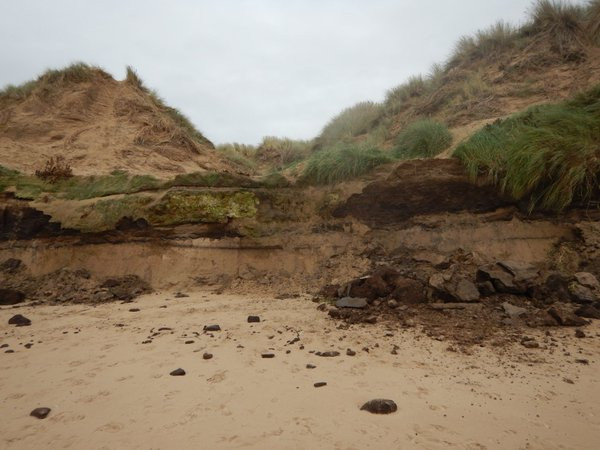Sand dunes that were once used as a dumping ground for waste tobacco are to be rejuvenated as a haven for dwindling wildlife – including one of the UK’s rarest amphibians.
The ‘tobacco cliffs’ at Formby in Merseyside are the product of thousands of tonnes of wet tobacco leaf that was tipped onto the dunes between the 1950s and 1970s by the British Nicotine Company, who operated a plant nearby.
Today the two-hectare site is carpeted with nettles, which have thrived on the waste, leaving no room for native plants, reptiles or the area’s most elusive inhabitant, the natterjack toad.
Now, the National Trust aims to breathe life back into area by restoring the natural processes of the dunes – which the charity says should be free to shift and move – and create much-needed space for wildlife.
Isabelle Spall, Project Officer for the National Trust, said: “Thousands of tonnes of tobacco were deposited at Formby each year for almost two decades, and while the waste itself isn’t toxic, the sheer quantity inevitably means it is going to have a dramatic impact on the ecology and the structure of any landscape.
“Dunes should look like sandy hills, with rolling undulations – but this area is completely flat and covered in nettles and thistles. It effectively creates a barrier that prevents toads and lizards from being able to move across the site.
“The animals need areas of bare sand mixed with patches of vegetation, so they have places to hunt and bask as well as room to hibernate, and for lizards, somewhere to lay eggs.
“With changing weather patterns, it’s even more important that wildlife can move freely to areas with better conditions.”
“This project is all about trying to give wildlife the best possible chance. It’s exciting to be creating something meaningful out of what was essentially a field of weeds.”
Restoration of the cliffs, which is now underway, involves excavating two large V-shaped wedges from the dunes with diggers. This will allow sand blown from the beach to be pushed through the gaps and build up on top of the tobacco waste, covering the nettles and creating new, undulating dunes.
The work is part of the UK-wide £10m Dynamic Dunescapes project funded by National Lottery Heritage Fund and EU LIFE Programme which is based on the pioneering idea that dunes which move and change shape are better for nature than those which are stable.
As part of the same scheme, Trust staff are creating 12 breeding pools for natterjack toads along the length of Formby’s dunes to resemble the ephemeral pools that appear naturally. Invasive plants will be removed to create patches of bare sand around the hollows where the nocturnal toads can hide during daylight, and reptiles can hunt and forage.
Verity Pitts, Dynamic Dunescapes Project Manager, says: “We’re now two years into our work helping to restore 7,000 hectares of sand dune habitat for wildlife and people across England and Wales. It’s fantastic that we’re able to work with organisations like National Trust to use pioneering conservation techniques to secure a better future for some of our rarest native species. This particular piece of work will tackle the issues caused by the former dumping of waste material and help ensure that our charismatic and much-loved natterjack toads will thrive at Formby for generations to come.”
The loss of habitat for natterjack toads extends across the UK and compounded with a changing climate and rising levels of pollution, means the species is increasingly under pressure. It is estimated that 75% of breeding sites have vanished since the start of the 20th century.
Formby is part of the 20km Sefton Coast dune system which stretches from Liverpool to Southport and is the largest of its kind in England. It is one of the most important dune habitats in North-west Europe and is home to 40% of the UK’s natterjack population. Organisations managing the land have been working in partnership for several years to try and improve its prospects.
Isabelle continued: “We are one of the last strongholds for natterjack toads so it is crucial we do everything we can to connect up these habitats and boost their chances of survival.
“There is a lot stacked against them. Not only are they reliant on sand dunes – which are now scarce across Europe – but they are vulnerable to unusual weather conditions and are prone to human disturbance. We hope this work will offer them a lifeline.”
Other species set to benefit from the work include sand lizards, which bury their eggs in bare sand, and the northern tiger beetle, a rare insect found only in Merseyside and Cumbria.
Formby is one of the fastest changing stretches of coastline in the National Trust’s care and much of the conservation work at the site focuses on adapting to the moving landscape.
The Trust is also calling on the public to help by not paddling in or letting dogs enter the dune pools. Visitors are encouraged to stick to the sea for paddling and carry water for their pets.







